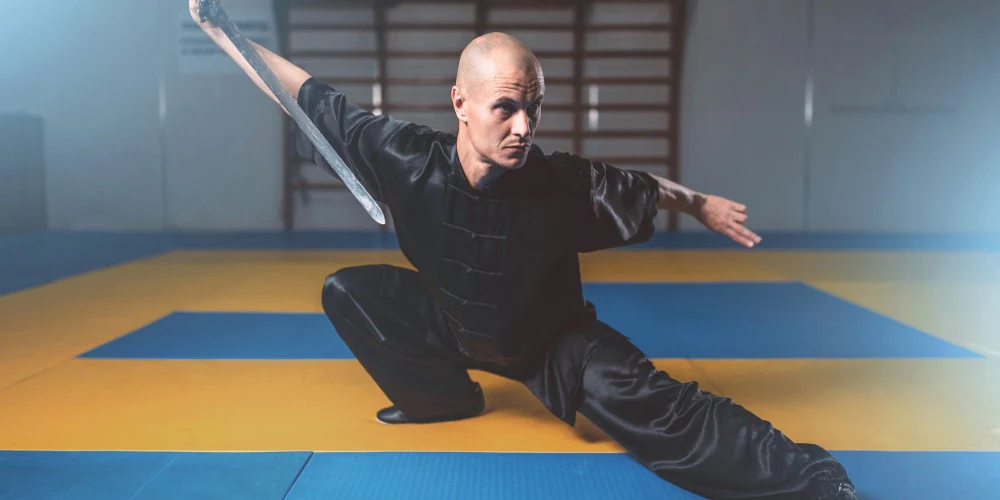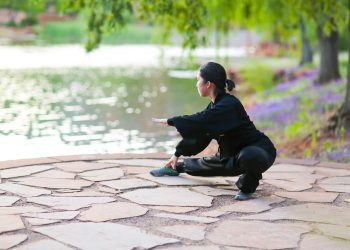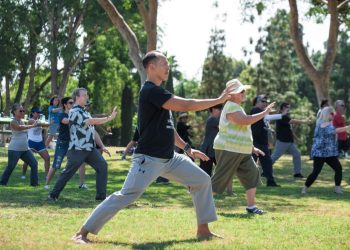Tai Chi walking, a fundamental practice that combines mindful movement with the flowing principles of Tai Chi, offers profound benefits for balance, coordination, and mental clarity. While outdoor practice in parks and natural settings is traditional, modern practitioners often find themselves needing to adapt this ancient art to indoor spaces. Whether you’re constrained by weather, privacy concerns, or simply prefer the controlled environment of your home, indoor Tai Chi walking can be just as effective as outdoor practice when approached thoughtfully.
Understanding Your Space Requirements
The first consideration for indoor Tai Chi walking is assessing how much space you actually need versus how much you have. Unlike stationary Tai Chi forms that can be practiced in a relatively compact area, walking meditation requires linear space. Ideally, you want a clear pathway of at least ten to fifteen feet, which allows for approximately five to seven deliberate steps before turning. However, many practitioners successfully work with as little as six to eight feet of clear floor space.
Begin by measuring your available areas. Walk through your home with fresh eyes, looking beyond the obvious living room or bedroom. Hallways, even if narrow, can serve as excellent practice corridors. The dining room after moving chairs aside, a basement rec room, or even a large bathroom can become your practice space. The key is finding anywhere you can move forward without obstruction and without the constant anxiety of bumping into furniture or walls.
Consider the width as well as length. You’ll need approximately three feet of width for comfortable arm movement, though experienced practitioners can work with slightly less. The space should allow you to extend your arms partially without touching walls or obstacles, as arm movements, though subtle in Tai Chi walking, still require some freedom.
Creating Your Indoor Practice Environment
Once you’ve identified your space, the next step is optimizing the environment. Flooring is perhaps your most important consideration. Hard surfaces like wood, tile, or linoleum allow you to feel your feet making contact with the ground, which is essential for developing proper root and balance. These surfaces provide immediate feedback about your weight distribution and stability.
Carpeted areas, while softer on the joints, can obscure this crucial feedback and make it harder to sense subtle shifts in weight. If carpet is your only option, choose low-pile carpet over thick, plush varieties. Some practitioners place yoga mats in a pathway over carpet to create a firmer surface, though this isn’t ideal as the mat edges can create tripping hazards. If you must practice on carpet, simply accept that you’ll need to pay extra attention to your proprioception—your body’s sense of position and movement.
Temperature control significantly impacts your practice quality. Tai Chi walking generates less heat than more vigorous forms, so maintain a slightly warm room temperature, typically between 68 and 72 degrees Fahrenheit. Cold muscles don’t move fluidly, and discomfort from being chilled will pull your attention away from mindfulness. Conversely, excessive heat can lead to mental sluggishness. A consistent, comfortable temperature helps you focus on the movement itself rather than external discomfort.
Lighting deserves careful consideration. Natural light is ideal when available, as it connects you to circadian rhythms and provides full-spectrum illumination. Position your walking path perpendicular to windows rather than facing them directly to avoid glare. For morning or evening practice, opt for warm, indirect lighting rather than harsh overhead fixtures. Dim lighting can help create a meditative atmosphere, but ensure you have enough light to see the floor clearly and notice any obstacles. Some practitioners use salt lamps or soft LED strips to create ambient lighting that’s conducive to focused practice.
Air quality matters more than many people realize. Stagnant air can make practice feel heavy and uninspiring. If weather permits, crack a window slightly to allow fresh air circulation. Otherwise, consider using an air purifier or simply opening doors to adjacent rooms. Good air flow helps maintain alertness and makes breathing exercises more pleasant. Avoid practicing in spaces with strong odors from cooking, cleaning products, or artificial fragrances, as these can be distracting during the focused breathing that accompanies Tai Chi walking.
Maximizing Limited Space: Creative Solutions
When space is truly limited, creativity becomes essential. The most straightforward adaptation is the “shuttle walk” method, where you practice back and forth in a short space, treating each turn as an integral part of the practice rather than an interruption. Instead of viewing the turn as breaking your flow, make it a deliberate, mindful transition. Slowly pivot on the balls of your feet, maintaining your centered awareness throughout the turning process, then continue your walk in the opposite direction.
For extremely confined spaces of six feet or less, consider the circular walking pattern. Mark or visualize a circle approximately three to four feet in diameter and walk its perimeter in slow motion. This method, borrowed from certain standing meditation traditions, maintains continuous movement without requiring long straight lines. Begin by facing north (or any arbitrary direction you choose), and slowly walk clockwise or counterclockwise around your circle, maintaining your Tai Chi posture and principles throughout. This approach actually offers unique benefits, as the constant subtle curve challenges your balance differently than straight-line walking.
Another strategy for small spaces is to practice Tai Chi walking in place. While this might seem counterintuitive, it effectively trains the weight-shifting principles central to Tai Chi. Stand in a comfortable position and slowly shift your weight from one foot to the other, lifting the unweighted foot just slightly off the ground before placing it back down. Focus on the same deliberate weight transfer, rooting, and body alignment you’d use in forward walking. This stationary practice can be remarkably meditative and builds strength in the supporting leg.
Consider the furniture in your space as an opportunity rather than an obstacle. A long dining table might necessitate walking around it, creating a rectangular path that actually offers variety and trains your turning skills. Open floor space between the sofa and wall, though narrow, can serve as a walking lane. Some practitioners set up folding room dividers to create a dedicated practice corner that mentally separates the space from its everyday function.
Vertical space utilization can also help. Remove low-hanging decorations, plants, or mobiles from your practice area to create a more open feeling overhead. This psychological spaciousness matters more than you might expect. Even if you’re not tall enough to touch these items, their presence can create a subconscious feeling of confinement that affects your practice quality.
Establishing Your Practice Routine
The indoor environment allows for consistency that outdoor practice sometimes lacks. Create a simple ritual that signals to your mind and body that practice time has begun. This might involve rolling up a rug, moving a coffee table aside, or simply changing into specific practice clothes. These small actions serve as anchors, helping you transition from everyday consciousness to practice awareness.
Start each session by standing in wu chi stance—feet shoulder-width apart, knees soft, spine aligned—and taking several conscious breaths to center yourself. Use this time to scan your body for tension and mentally establish your intention for the practice. This preparation phase is especially important indoors, where the transition from daily activities to practice can feel abrupt.
As you begin walking, emphasize quality over quantity. Indoor practice naturally limits the total number of steps you can take, so make each step count. Focus on the complete transfer of weight from one foot to the other, feeling your back foot become completely empty before lifting it. Notice how your arms naturally swing in subtle counterbalance to your legs. Observe the gentle spiraling sensation in your spine and hips as your body weight shifts.
The confined nature of indoor practice actually offers advantages for developing specific skills. You can position yourself near a mirror to check your alignment without the self-consciousness that might arise in a public park. You can practice at any hour without concern for weather or darkness. You can pause mid-practice to make notes about insights or challenges without disturbing others. You can experiment with different speeds and styles without feeling observed.
Addressing Common Indoor Practice Challenges
Many practitioners worry that indoor practice feels claustrophobic or limiting compared to outdoor walking. This perception often shifts with time. Instead of focusing on what you lack—endless space, natural scenery, fresh breezes—focus on what indoor practice provides: climate control, privacy, consistency, and the ability to concentrate without external distractions. The mental challenge of making a small space work for you actually deepens your practice by demanding greater focus and creativity.
Distractions in the home environment require deliberate management. Inform household members of your practice time and request minimal interruptions. Silence phones and close your practice space door if possible. If you live in a busy household where complete quiet is impossible, accept ambient sounds as part of your practice rather than fighting them. The refrigerator hum, distant traffic, or family sounds in other rooms can become part of your awareness practice rather than obstacles to it.
Floor squeaks and creaks, common in many homes, initially seem like problems but can actually serve as feedback mechanisms. A quiet, controlled step produces minimal noise, while rushed or heavy steps create more sound. Use these acoustic signals to refine your movement quality.
Some practitioners struggle with motivation when practicing alone indoors. Consider documenting your practice in a journal, noting duration, observations, and insights. This record-keeping provides a sense of progression and accountability. Alternatively, practice along with instructional videos occasionally to maintain proper form and introduce variety, though ultimately your goal is developing independent practice.
Indoor Tai Chi walking transforms limitation into opportunity. The practice doesn’t require acres of parkland or perfect conditions—it requires intention, consistency, and adaptation. Your hallway, living room, or bedroom can become a genuine practice space when you approach it with creativity and commitment. The principles of Tai Chi—rootedness, flow, mindfulness, and balance—express themselves just as fully in ten feet of cleared floor space as they do in expansive outdoor settings.
Start where you are, with what you have. Measure your space, clear a path, and take your first slow, deliberate step. Over time, your indoor practice area will develop its own energy, becoming a familiar refuge where you can explore the subtle art of mindful walking regardless of what’s happening in the world outside your walls.






